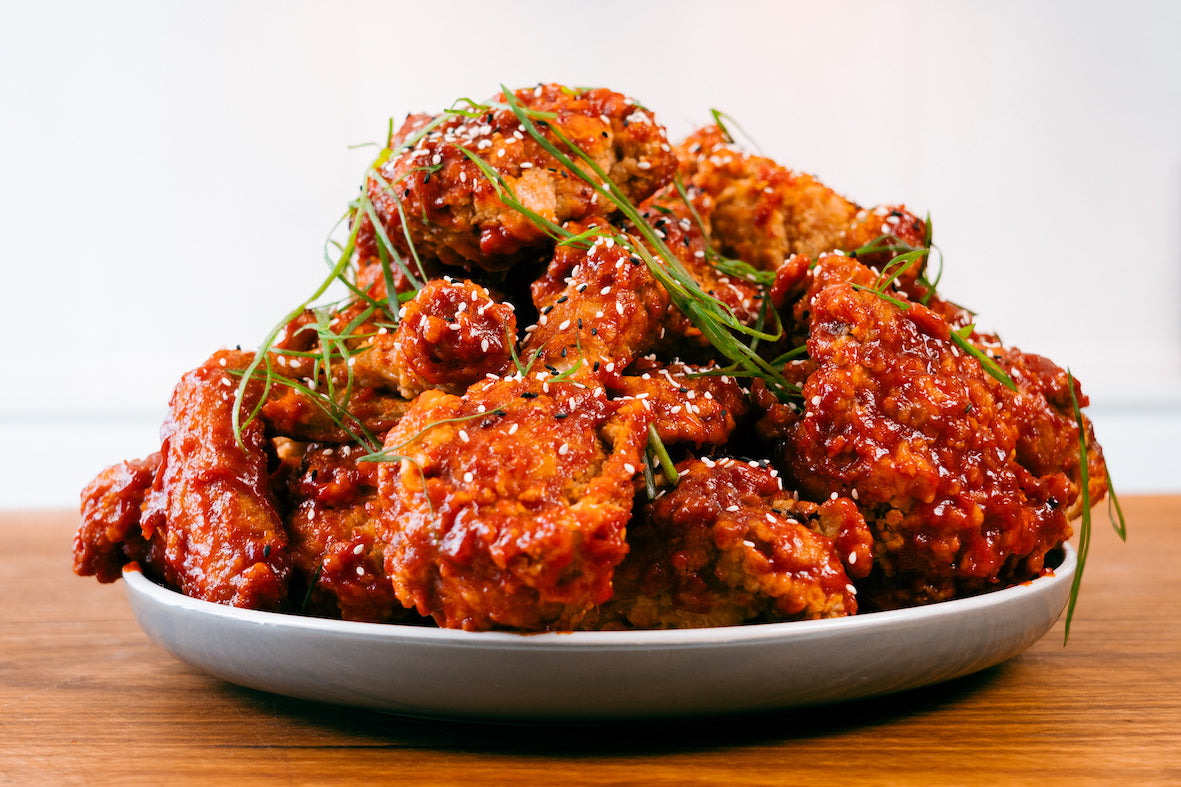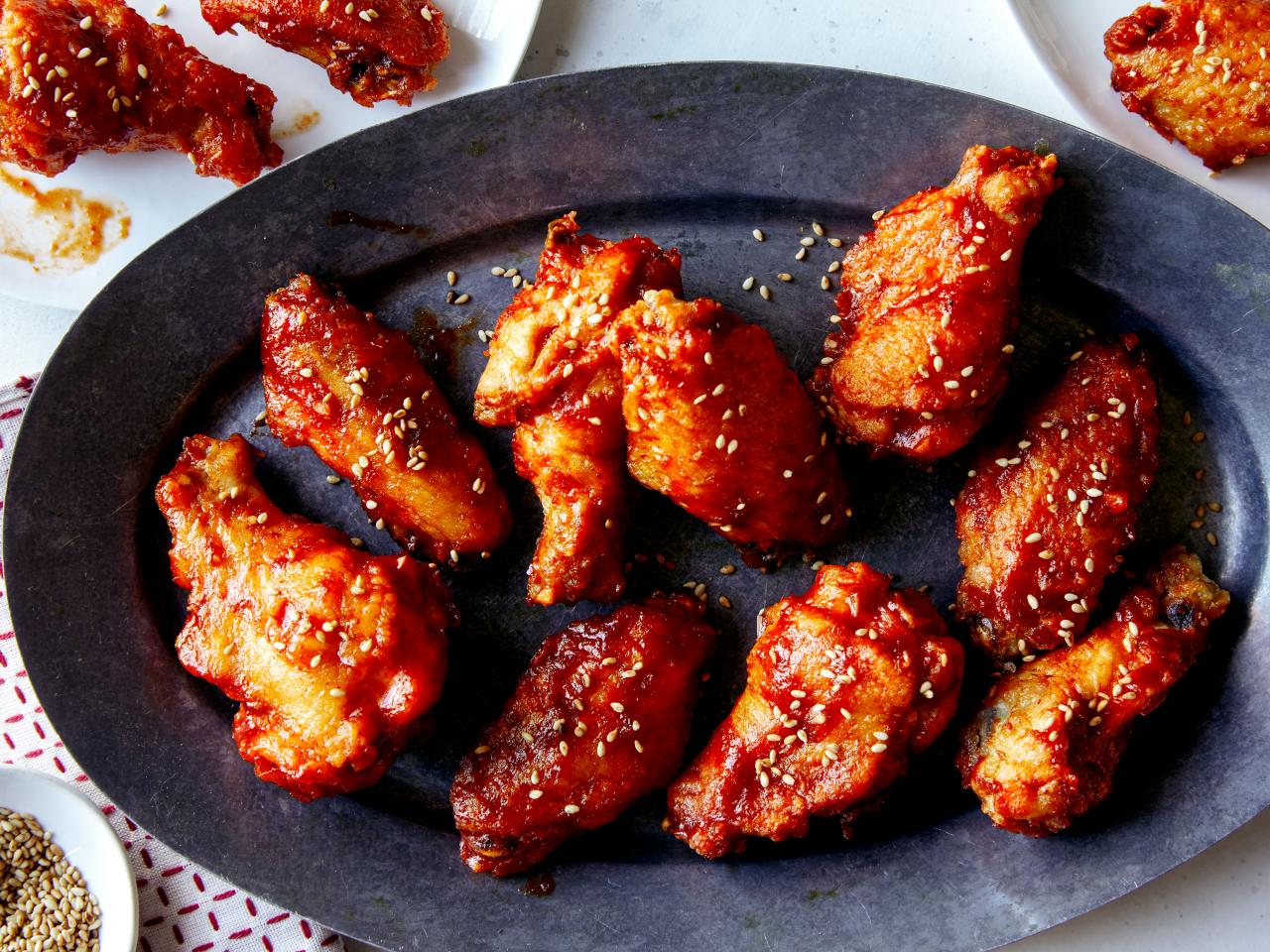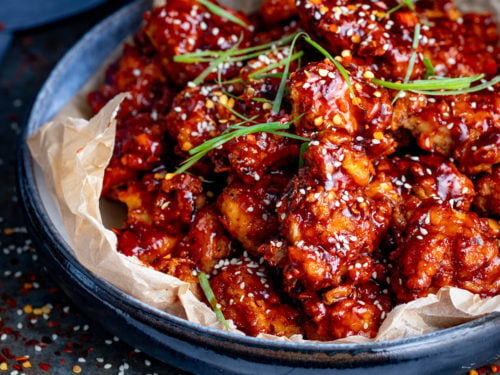Korean fried chicken, often abbreviated as KFC, has taken the culinary world by storm with its irresistible combination of crispy, crunchy exterior and juicy, tender meat, all enveloped in a myriad of bold and flavorful sauces. Originating from South Korea, this beloved dish has become a global sensation, capturing the hearts and taste buds of food enthusiasts everywhere. In this comprehensive exploration, we delve into the history, preparation methods, flavor profiles, and cultural significance of Korean fried chicken.
History:
The roots of Korean fried chicken can be traced back to the 1950s and 1960s when American influences, particularly from the Korean War era, introduced frying techniques to Korea. However, it wasn’t until the 1970s that fried chicken gained popularity in South Korea, thanks to the opening of the country’s first fast-food fried chicken chain. Over the years, Korean chefs and home cooks alike began experimenting with different frying methods and flavor combinations, leading to the development of the crispy, double-fried chicken that defines Korean fried chicken today.

Preparation Methods:
One of the defining features of Korean fried chicken is its double-frying technique, which results in an exceptionally crispy and crunchy exterior while keeping the meat juicy and tender. The process typically involves coating the chicken pieces in a seasoned flour or starch mixture, frying them at a lower temperature to cook the meat through, then frying them again at a higher temperature to achieve a golden brown and crispy crust.
Varieties:
Korean fried chicken comes in a variety of styles and flavors, each offering a unique taste experience. Some popular variations include:
- Original Fried Chicken: Crispy and golden-brown on the outside, juicy and tender on the inside, this classic version of Korea fried chicken is seasoned simply with salt and pepper or a light batter for added crunch.
- Yangnyeom Chicken (Seasoned Chicken): Coated in a sweet and spicy sauce made from a blend of gochujang (Korean chili paste), soy sauce, garlic, ginger, and honey, Yangnyeom Chicken packs a flavorful punch that tantalizes the taste buds.
- Garlic Soy Chicken: A savory and aromatic option, Garlic Soy Chicken is seasoned with a sticky glaze made from soy sauce, garlic, ginger, and sugar, resulting in a rich and umami-filled coating.
- Honey Butter Chicken: Perfect for those with a sweet tooth, Honey Butter Chicken features a decadent glaze made from butter, honey, and sugar, offering a delightful combination of sweet and savory flavors.
- Cheese-Flavored Chicken: For cheese lovers, this variation of Korean fried chicken is topped with melted cheese and often served with a sprinkle of powdered cheese for an indulgent and comforting treat.

Serving Suggestions:
Korean fried chicken is typically served as a standalone dish or accompanied by various side dishes and condiments. Common accompaniments include:
- Pickled radishes (danmuji) or cabbage slaw to balance the richness of the chicken.
- Crisp lettuce leaves for wrapping the chicken pieces, along with slices of garlic, chili peppers, and other condiments for added flavor.
- Cold beer or refreshing soju, a popular Korean alcoholic beverage, to complement the spicy and savory flavors of the chicken.
Cultural Significance:
In South Korea, fried chicken holds a special place in the culinary landscape and is often enjoyed as a social and celebratory food. It is commonly consumed during gatherings with friends and family, as well as on special occasions such as birthdays, holidays, and sporting events. In recent years, Korean fried chicken has also gained popularity as a late-night snack, with many restaurants and eateries specializing in serving it well into the early hours of the morning.
Global Influence:
Beyond South Korea, Korean fried chicken has garnered a devoted following around the world, with restaurants and food trucks specializing in this delectable dish popping up in cities everywhere. Its widespread appeal can be attributed to its addictive combination of flavors, crispy texture, and versatility, as well as its ability to cater to a wide range of dietary preferences and tastes.
Ingredients: Korean Fried Chicken Recipe
- 2 cups cooked short-grain white rice
- 200g beef (sirloin or ribeye), thinly sliced
- 2 cloves garlic, minced
- 1 tablespoon soy sauce
- 1 tablespoon sesame oil
- 1 tablespoon brown sugar
- Salt and pepper, to taste
- 1 cup spinach, blanched and squeezed dry
- 1 cup bean sprouts, blanched and drained
- 1 carrot, julienned
- 1 zucchini, julienned
- 4 shiitake mushrooms, sliced
- 4 eggs
- 4 tablespoons vegetable oil
- 4 tablespoons gochujang (Korean chili paste)
- Toasted sesame seeds, for garnish
- Thinly sliced green onions, for garnish
For the Marinade (for beef):
- 2 tablespoons soy sauce
- 1 tablespoon sesame oil
- 1 tablespoon brown sugar
- 1 clove garlic, minced
- 1 teaspoon grated ginger
Korean Fried Chicken
1. Marinate the Beef:
- In a bowl, combine the thinly sliced beef with the marinade ingredients: soy sauce, sesame oil, brown sugar, minced garlic, and grated ginger. Mix well to coat the beef evenly. Allow it to marinate for at least 30 minutes in the refrigerator.
2. Prepare the Vegetables:
- Blanch the spinach and bean sprouts separately in boiling water for about 1-2 minutes until they are wilted. Drain them and rinse with cold water. Squeeze out excess water from the spinach and set both aside.
- Julienne the carrot and zucchini into thin matchsticks. Slice the shiitake mushrooms thinly.
3. Cook the Beef:
- Heat a tablespoon of vegetable oil in a large skillet over medium-high heat. Add the marinated beef and cook for 2-3 minutes until browned and cooked through. Remove from heat and set aside.

4. Prepare the Eggs:
- In the same skillet, heat another tablespoon of vegetable oil over medium heat. Crack the eggs into the skillet and fry them to your desired doneness (sunny-side-up or over easy). Remove from heat and set aside.
5. Cook the Vegetables:
- In the same skillet (or separate skillet if preferred), heat the remaining vegetable oil over medium heat. Add the julienned carrot and zucchini, and sauté for 2-3 minutes until they are slightly softened. Season with salt and pepper to taste. Remove from heat and set aside.
- In the same skillet, add a bit more oil if needed and sauté the sliced shiitake mushrooms until they are tender. Season with salt and pepper to taste. Remove from heat and set aside.
6. Assemble the Bibimbap:
- Divide the cooked rice among serving bowls. Arrange the cooked beef, blanched spinach, bean sprouts, sautéed carrots, zucchini, and mushrooms on top of the rice, placing each ingredient in a separate section around the bowl.
- Place a fried egg on top of each bowl of rice.
- Serve the bibimbap with a spoonful of gochujang on the side.
- Garnish with toasted sesame seeds and thinly sliced green onions.

7. Serve and Enjoy:
- To eat, mix all the ingredients together thoroughly, incorporating the gochujang and breaking the egg yolk to create a creamy sauce.
- Enjoy the vibrant flavors and textures of classic Korean bibimbap!
FAQs
1. What makes Korean fried chicken different from other fried chicken?
- Korean fried chicken is known for its exceptionally crispy and crunchy exterior, achieved through a double-frying technique. Additionally, it often features bold and flavorful sauces, such as sweet and spicy gochujang or garlic soy.
2. Can I use any type of chicken for Korean fried chicken?
- Yes, you can use various cuts of chicken, such as wings, drumsticks, thighs, or breast strips, depending on your preference. However, bone-in cuts tend to be more traditional and flavorful.
3. What is the key to achieving crispy Korean fried chicken?
- The key to achieving crispy Korean fried chicken lies in the double-frying technique. By frying the chicken at a lower temperature first to cook it through, then frying it again at a higher temperature to crisp up the exterior, you can achieve that signature crunchiness.
4. Can I make Korean fried chicken without deep-frying?
- While deep-frying is the traditional method for making Korean fried chicken, you can achieve similar results by baking the chicken in the oven. Simply coat the chicken pieces in the seasoned flour mixture, place them on a baking sheet lined with parchment paper, and bake at a high temperature until crispy and golden brown.
5. How spicy is Korean fried chicken?
- The level of spiciness in Korean fried chicken can vary depending on the sauce used. Some variations, such as Yangnyeom Chicken, can be quite spicy due to the addition of gochujang (Korean chili paste), while others may be milder or have a sweet and savory flavor profile.
6. What are some popular sauce options for Korean fried chicken?
- Some popular sauce options for Korean fried chicken include:
- Yangnyeom sauce: A sweet and spicy sauce made with gochujang, soy sauce, honey, and other seasonings.
- Garlic soy sauce: A savory and aromatic sauce made with soy sauce, garlic, ginger, and sesame oil.
- Honey butter sauce: A sweet and savory sauce made with butter, honey, and sugar.
- Spicy soy garlic sauce: A combination of spicy and savory flavors with soy sauce, garlic, gochujang, and sugar.
7. How do I store leftover Korean fried chicken?
- To store leftover Korean fried chicken, allow it to cool completely, then transfer it to an airtight container and refrigerate for up to 3-4 days. To reheat, you can warm it in the oven at a low temperature to help retain its crispiness.
Conclusion:
In summary, Korean fried chicken is more than just a culinary delight—it’s a cultural phenomenon that has captivated the hearts and taste buds of people around the globe. With its crispy exterior, tender meat, and bold flavors, Korean fried chicken offers a sensory experience like no other, inviting food enthusiasts to indulge in its irresistible charms time and time again. Whether enjoyed as a hearty meal, a satisfying snack, or a social gathering centerpiece, Korean fried chicken continues to leave a lasting impression, making it a timeless favorite in the world of gastronomy.
Also : Kalbi (Korean Short Ribs)
